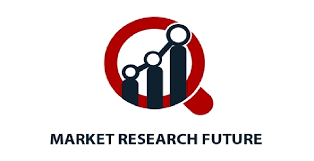Europe Feed Enzymes Competitive Market Values Research (2024-2032)

Europe Feed Enzymes Market
The Europe feed enzymes market is a dynamic sector that has seen substantial growth due to the region's strong focus on sustainable agriculture and animal health. Feed enzymes are essential in enhancing the nutritional value of animal feed, improving feed efficiency, and mitigating environmental impacts.
Market Dynamics
The growth of the European feed enzymes market is influenced by several factors, including regulatory frameworks, advancements in enzyme technology, and the increasing demand for animal protein.
1. Regulatory Frameworks: Europe has stringent regulations regarding animal feed additives to ensure food safety and environmental protection. The European Food Safety Authority (EFSA) plays a crucial role in the evaluation and approval of feed enzymes, ensuring that only safe and effective products are used.
2. Advancements in Enzyme Technology: Continuous research and development have led to significant improvements in enzyme formulations. These advancements enhance the stability and efficacy of enzymes, making them more effective in various feed applications.
3. Demand for Animal Protein: The increasing consumption of animal protein in Europe drives the demand for efficient animal production systems. Feed enzymes help improve feed conversion rates and nutrient absorption, supporting the growing demand for meat, milk, and eggs.
Key Enzymes and Their Applications
1. Phytase: Widely used to degrade phytic acid in plant-based feeds, phytase enhances phosphorus availability, reducing the need for inorganic phosphorus supplements and decreasing phosphorus excretion.
2. Protease: These enzymes break down proteins into absorbable amino acids, improving protein utilization and growth performance in livestock.
3. Carbohydrase: Enzymes such as xylanase and glucanase break down non-starch polysaccharides, improving energy availability and feed digestibility.
Market Trends
1. Focus on Sustainability: European consumers and regulators are increasingly focused on sustainable agricultural practices. Feed enzymes contribute to sustainability by improving feed efficiency and reducing the environmental footprint of livestock farming.
2. Innovation in Enzyme Formulations: There is a trend towards developing multi-enzyme complexes that can target various anti-nutritional factors simultaneously, providing comprehensive benefits to animal nutrition.
3. Growth in Aquaculture: The aquaculture sector in Europe is expanding, and feed enzymes are being increasingly adopted to enhance the nutritional value of aquafeeds, improving the growth and health of farmed fish and shellfish.
Challenges
1. Regulatory Compliance: The stringent regulatory environment in Europe can pose challenges for feed enzyme manufacturers in terms of gaining approvals and ensuring compliance with safety standards.
2. High Costs: The production and formulation of feed enzymes are cost-intensive, which can be a barrier to widespread adoption, especially among small-scale farmers.
Conclusion
The European feed enzymes market is set for sustained growth, driven by advancements in enzyme technology, a strong regulatory framework, and a focus on sustainable animal production. Despite challenges such as regulatory compliance and high costs, the benefits of feed enzymes in improving feed efficiency and animal health make them an integral part of modern animal nutrition in Europe.
Contact us:
Market Research Future (part of Wantstats Research and Media Private Limited),
99 Hudson Street,5Th Floor, New York, 10013, United States of America
Sales: +1 628 258 0071 (US) +44 2035 002 764 (UK)
- Industry
- Art
- Causes
- Crafts
- Dance
- Drinks
- Film
- Fitness
- Food
- Juegos
- Gardening
- Health
- Home
- Literature
- Music
- Networking
- Other
- Party
- Religion
- Shopping
- Sports
- Theater
- Wellness
- News


